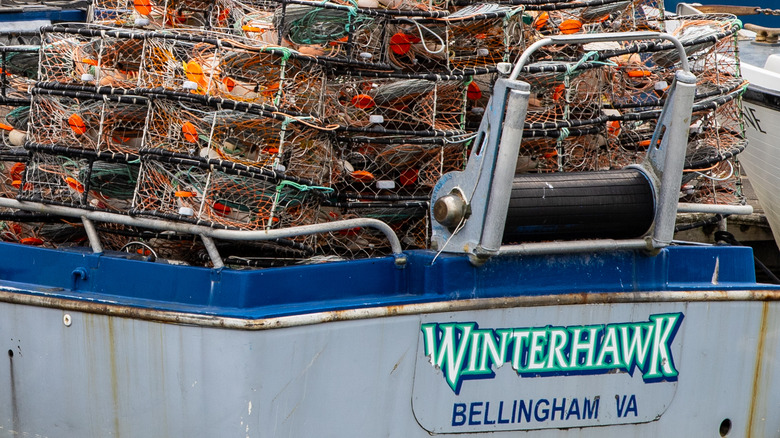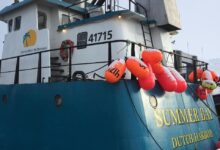Why Deadliest Catch’s Crab Pots Are Some Of The Show’s Riskiest Tools
Why Deadliest Catch’s Crab Pots Are Some Of The Show’s Riskiest Tools

The reality series “Deadliest Catch” has been enjoyed by fans for nearly two decades now. Unfortunately, not all the crab fishermen, themselves, have lived as long as the show has aired. In fact, there are more than a few “Deadliest Catch” members you may not know passed away. According to HowStuffWorks, along with the countless number of injuries, nearly a dozen fishermen die, worldwide, every year. And when you analyze all the risks these fishermen take, from obvious to hidden, it’s surprising that the number isn’t higher.
These brave workers risk bodily harm due to rough seas, horrific weather conditions, and even terrifying mechanical malfunctions of the boat itself. On top of all that, falling overboard is always a possibility, which will send a fisherman into the below 20°F water of the Bering Strait. If not rescued immediately, water that cold can result in deep hypothermia and death. In fact, back in 2020, the Seattle Times reported that five crab fishermen lost their lives after their boat took on water, causing the workers to perish in the freezing sea.
However, when you take a look at all the different factors that can result in the fisherman’s bodily harm, there is one piece of equipment that carries multiple dangers with it. And this piece of equipment is as essential to the fishing process as it is dangerous: the crab pot.
Crab pots are useful, but dangerous

There’s no way to catch a crab without a trap, and these giants weigh about 700 pounds (via HowStuffWorks). Due to its weight, the crab pot must be lifted with a hydraulic crane, guided to a platform on the edge of the vessel by the fisherman themselves, and then released into the water. After a set time of soaking, the trap is retrieved.
However, there are plenty of unforeseen factors that can turn a day’s work with a crab pot into a disaster. With rough, bobbing seas being the norm in the Bering Strait, keeping these traps steady is nearly impossible. A trap can easily slide along the deck and crush anyone in its path. In “Deadliest Catch” Season 18, Episode 2 (“Crushed at Sea”), Francis Katongan, a deckhand on the Patrica Lee, was pinned and crushed by a pot, resulting in an emergency helicopter rescue.
According to NBC News, another danger involved in crab pots is getting snagged by the rope attached to eat trap. When the 700-pound trap is dropped into the water, a rope shoots down with it, and the risk of it wrapping around a fisherman’s leg can mean a one-way ticket to the bottom of the seafloor. Even when not used, these crab pots can present a danger to the fishermen. According to HowStuffWorks, ice buildup during heavy storms can add an additional 45 tons of weight to the boat, risking the vessel tipping over. This is just one of many dangerous factors these brave fishermen face daily on the Bering Strait.


